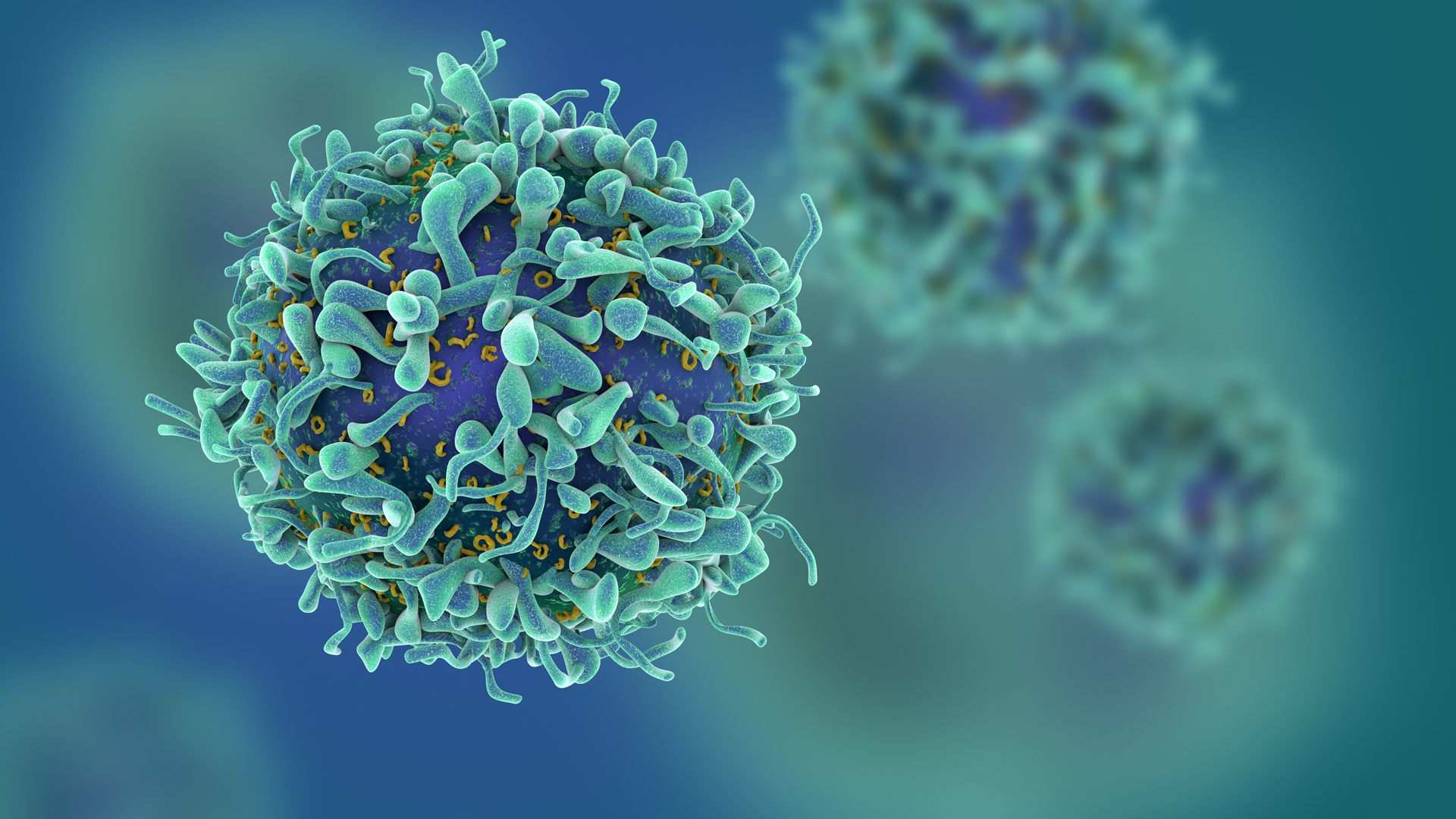TORL-1-23 Generates Responses in Heavily Pretreated CLDN6-Positive Solid Tumors
Patients with Claudin-6–positive advanced solid tumors, including platinum-resistant ovarian cancer, tended to respond to therapy with TORL-1-23
TORL-1-23 was tolerable and led to responses in patients with heavily pretreated, CLDN6-positive advanced solid tumors, including platinum-resistant ovarian cancer.

TORL-1-23, a Claudin-6 (CLDN6)–targeted antibody-drug conjugate (ADC), led to responses in patients with heavily pretreated, CLDN6-positive advanced solid tumors, including platinum-resistant ovarian cancer. Additionally, the agent was well tolerated, according to data from the phase 1 TORL-123-001 trial (NCT05103683) trial presented at the 2024 ESMO Congress.1
Findings showed that among all efficacy-evaluable patients, those treated with TORL-1-23 at doses of less than 2.4 mg/kg (n = 19), the overall response rate (ORR) was 26%, which was comprised exclusively of partial responses (PRs); 42% of patients had stable disease (SD), and 32% of patients had progressive disease (PD). At a dose of 2.4 mg/kg (n = 19), the ORR was 42% with all responders achieving a PR; the rates of SD and PD were 47% and 11%, respectively. At a dose of 3.0 mg/kg (n = 26), the ORR was 31%, including a complete response rate of 4% and a PR rate of 27%; the respective SD and PD rates were 46% and 23%.
In patients with CLDN6-positive platinum-resistant ovarian cancer, the ORRs were 30% at doses less than 2.4 mg/kg, 50% (n = 4/8) at the 2.4-mg/kg dose, and 42% (n = 5/12) at the 3.0 mg/kg dose.
Lead study author Gottfried E. Konecny, MD, said the ADC was well tolerated with a favorable safety profile. The risk of neutropenia was mitigated by prophylactic pegfilgrastim, and the maximum-tolerated dose (MTD) of TORL-1-23 had not yet been reached.
“The promising activity was confirmed as being durable and deep…[there were encouraging data for] all patients treated in dose escalation, particularly in [patients with] ovarian cancer treated at 2.4 mg/kg and 3.0 mg/kg,” Konecny said during a presentation of the data. He is the lead clinician for gynecologic oncology in the Department of Medicine at the University of California, Los Angeles.
CLDN6 is expressed at high levels in a variety of cancers and has little to no expression in normal tissues, Konecny explained during the presentation. Along with targeting CLDN6, TORL-1-23 features a valine-citrulline monomethyl auristatin E linker payload with a drug-to-antibody ratio of approximately 4.
TORL-123-001 Design and Enrollment
The phase 1, 2-part, multicenter, first-in-human study enrolled patients at least 18 years of age with advanced solid tumors who had measurable disease per RECIST 1.1 criteria, an ECOG performance status of 0 or 1, and adequate organ function.2
TORL-1-23 is being evaluated at 11 different dose levels ranging from 0.2 mg/kg to 3.6 mg/kg. At dose level 9 (3.0 mg/kg), dose level 10 (4.0 mg/kg), and dose level 11 (3.6 mg/kg), prophylactic pegfilgrastim is also being administered at a dose of at least 3.0 mg/kg.
The dose-expansion portion of the study includes patients with CLDN6-positive platinum-resistant ovarian cancer, CLDN6-positive refractory non–small cell lung cancer (NSCLC), other CLDN6-positive refractory cancers, and CLDN6-low refractory cancers.1 Within each of those groups, approximately 10 to 20 patients are being treated at both 2.4 mg/kg and 3.0 mg/kg.
The primary objectives of the study are safety, tolerability, dose-limiting toxicities, and determining the MTD and recommended phase 2 dose.
Among patients enrolled in the dose-escalation portion of the study (n = 51), the median age was 61 years (range, 26-78), and most patients were female (n = 45). Tumor types included ovarian (n = 36), testicular (n = 4), endometrial (n = 7), NSCLC (n = 2), and other (n = 2). This patient population received a median of 4 prior lines of therapy (range, 1-9). Thirty-eight patients had CLDN6-positive disease per immunohistochemistry (IHC).
In dose expansion (n = 30), the median age was 65 years (range, 31-79), and most patients were female (n = 24). Tumor types included ovarian (n = 14), testicular (n = 1), endometrial (n = 6), NSCLC (n = 6), and other (n = 3). Patients received a median of 3 prior lines of therapy (range, 1-4). Twenty-seven patients had CLDN6-positive disease per IHC.
Additional Efficacy and Safety Data
In patients with platinum-resistant ovarian cancer, the median duration of response was approximately 22 weeks for those treated with the 2.4-mg/kg dose and approximately 30 weeks for those treated at the 3.0-mg/kg dose in combination with prophylactic pegfilgrastim.
Safety data from dose expansion showed that at the 2.4-mg/kg dose (n = 16), the most common adverse effects (AEs) included anemia (any grade, 25%; grade ≥3, 0%), neutropenia (31%; 19%), nausea (67%; 0%), constipation (6%; 0%), diarrhea (25%; 6%), vomiting (25%; 0%), fatigue (56%; 19%), arthralgia (31%; 0%), myalgia (19%; 6%), neuropathy (25%; 0%), and alopecia (56%; 0%).
At the 3.0-mg/kg dose (n = 14), the most frequent AEs consisted of anemia (any grade, 29%; grade ≥3, 0%), neutropenia (7%; 7%), nausea (64%; 0%), constipation (29%; 0%), diarrhea (21%; 0%), vomiting (21%; 0%), fatigue (79%; 14%), arthralgia (43%; 0%), myalgia (21%; 0%), neuropathy (57%; 0%), and alopecia (69%; 0%).
“There is a registrational phase 2 study being initiated globally in CLDN6-positive platinum-resistant [ovarian cancer], and the molecule is under further evaluation in other CLDN6-positive cancers, including NSCLC,” Konecny concluded.
Disclosures: Dr Konecny reported serving as part of a speaker bureau with AstraZeneca, ImmunoGen, and Merck; receiving research support to his institution from Lilly and Merck; receiving travel support from TORL Biotherapeutics, and providing expert testimony for Foundation Medicine.
References
1. Konecny GE, Hendrickson AW, Winterhoff B, et al. Phase I, two-part, multicenter first-in-human (FIH) study of TORL-1-23, a novel Claudin 6 (CLDN6) targeting antibody drug conjugate (ADC) in patients with advanced solid tumors. Presented at: 2024 ESMO Congress; September 13-17, 2024; Barcelona, Spain. Presentation 721MO.
2. First in human study of TORL-1-23 in participants with advanced cancer (TRIO049). ClinicalTrials.gov. Updated August 9, 2024. Accessed September 15, 2024. https://clinicaltrials.gov/study/NCT05103683



